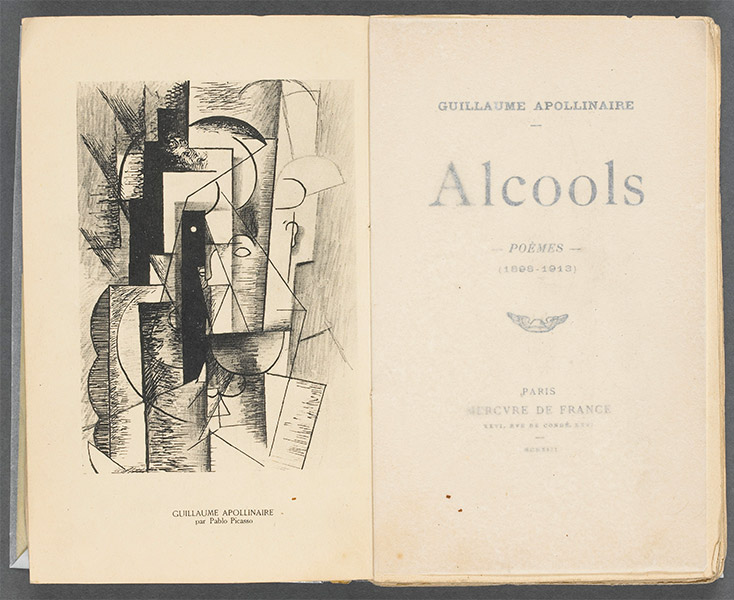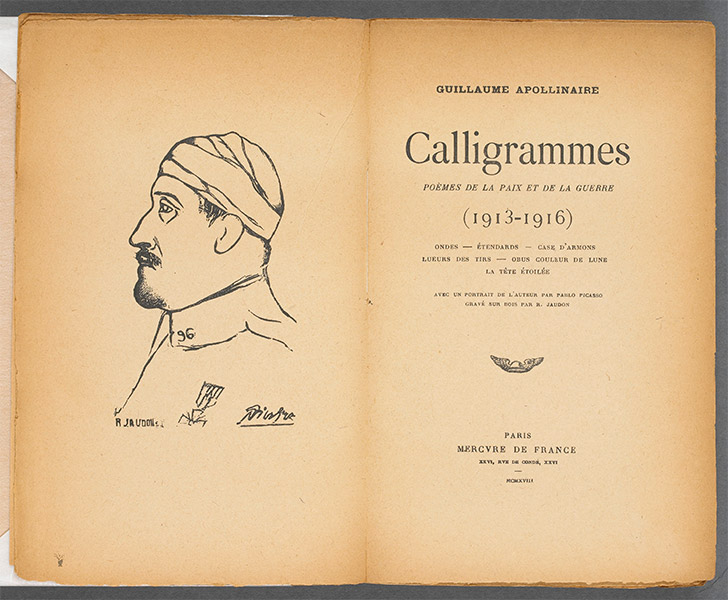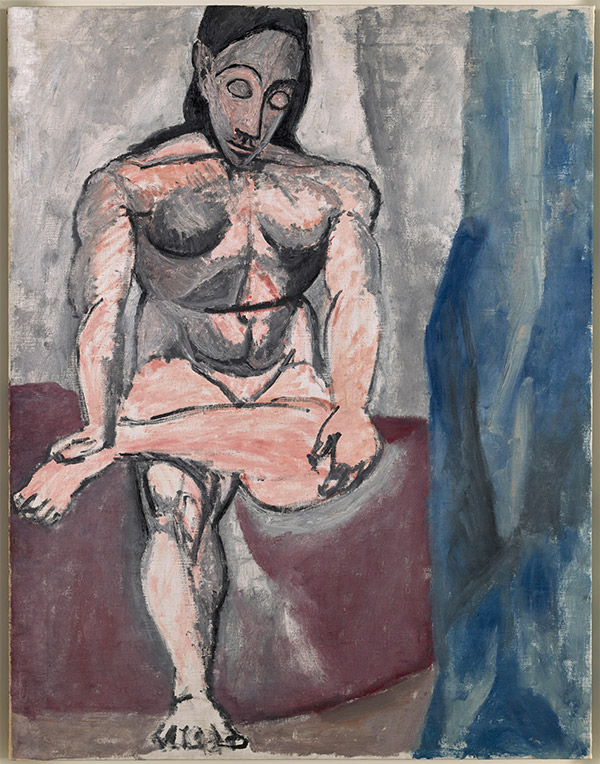Two artists who question all possibilities
Guillaume and Pablo went out together, ate together, met near the Saint-Lazare train station, hugged each other out of the blue, and discussed everything under the sun. Picasso often drew his friend, not without a sense of humor. Each played an important role in the other's life. Apollinaire left Le Vésinet, where he lived with his tyrannical mother, and moved to Rue Henner, in Montmartre (where he began an affair with Marie Laurencin, who inspired his famous poem "Le Pont Mirabeau"). Apollinaire and Picasso's emotional connection was evident to everyone. They dedicated poems and drawings or paintings to each other, and exchanged views about the world and life itself. Apollinaire introduced Picasso to erotic texts, in which the poet had become an expert. Picasso appeared on the frontispiece of Alcools and Calligrammes. The first frontispiece was a portrait of Apollinaire that could be considered Cubist, whereas the second illustrated poems which, in turn, were referred to as Cubist. Apollinaire's work was less present in Picasso's output, but that is irrelevant: each one was passionate about the other's work. Apollinaire was a fierce advocate of his friend throughout his career as an art critic and writer.
Picasso loved his friend's presence, his lust for life, his sense of provocation, his communicative wit and his immense talent for writing. Apollinaire, in turn, observed the painter's constant inquisitiveness, his unrelenting formal quests, his insatiable desire for artistic discoveries, and his curiosity about everything around him. In 1907, during the genesis of the Demoiselles d'Avignon, the poet wrote in one of his notebooks: "Evening, dinner with Picasso, saw his new painting: even colors, pinks of flowers, of flesh, etc. women's heads similar and simple heads of men too. Marvelous language that no literature can express because alas our words are already made."[1] The two artists understood each other without even uttering a word: they sought to venture further in their creative efforts, take risks, redefine bodies, space, and time. The young poet wanted to broaden the rhythms for his verses.
[1] Picasso/Apollinaire, correspondance, op. cit., pp. 10-11.







 Summary
Summary